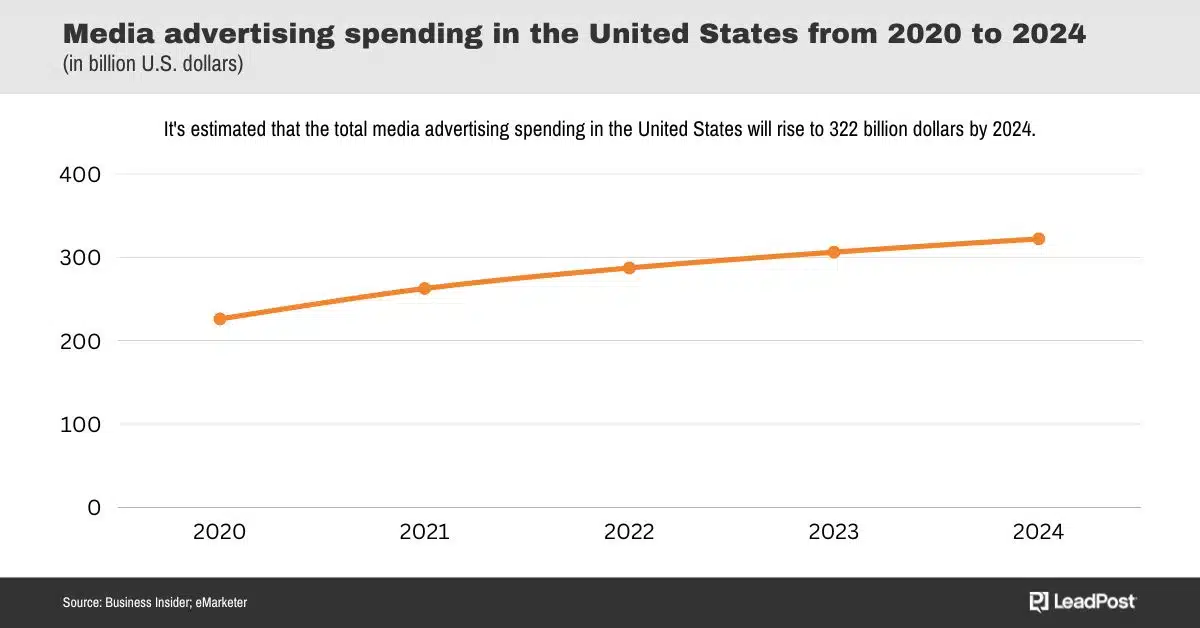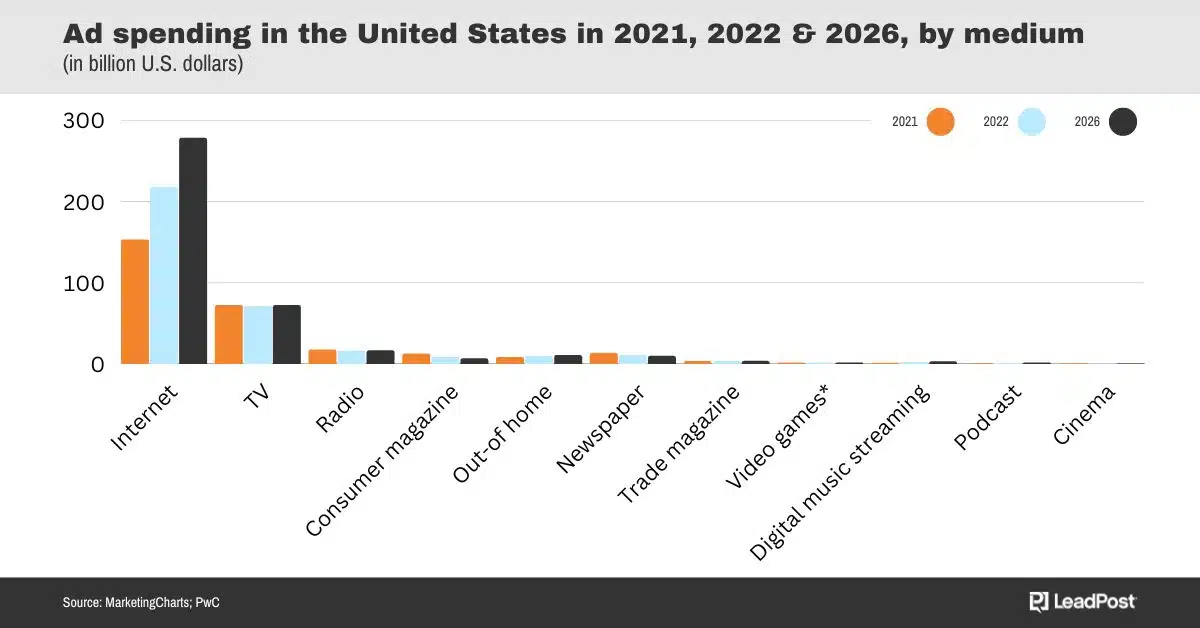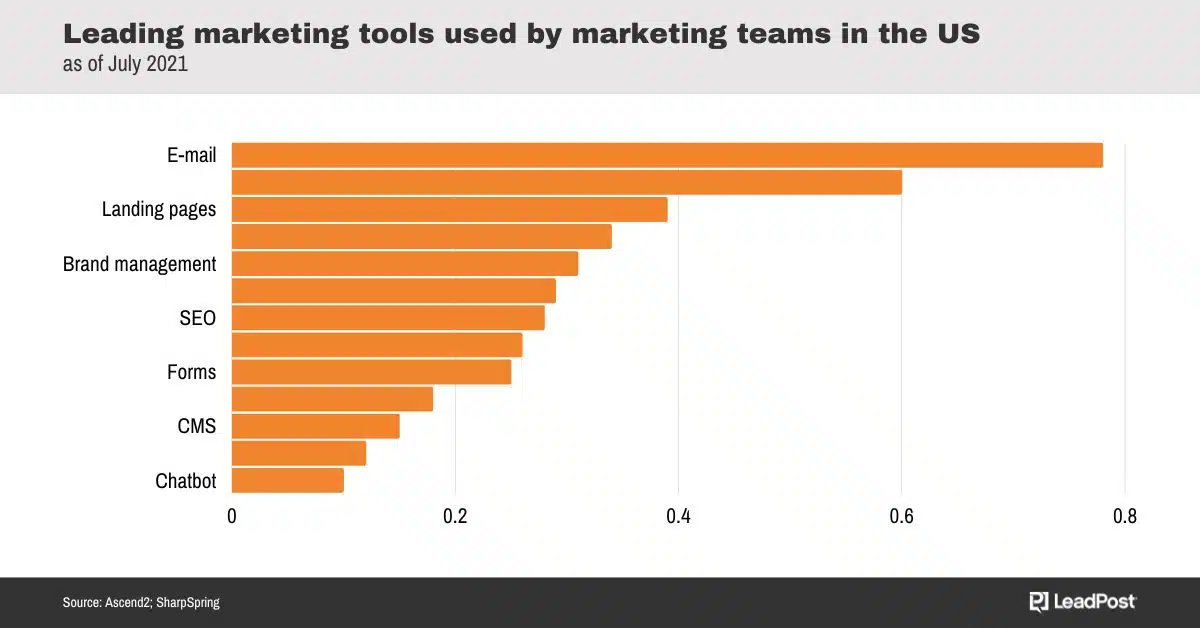In recent years, the marketing industry has seen a shift towards inbound marketing, leading some to declare that outbound marketing is dead. However, reports of outbound’s death are premature. Outbound marketing, when executed correctly, can still be a valuable way to reach potential customers.

Inbound vs. Outbound Marketing
For more information on the state of outbound, we talked to Philippe Kwiatkowski, CEO of outreach software company Ubico, and Scott Erb, one of Ubico’s Account Executives.
Inbound marketing refers to marketing strategies that attract potential customers to your brand by providing valuable content, building relationships, and earning their trust. This is achieved through tactics such as content creation, search engine optimization (SEO), social media marketing, and influencer marketing.
Outbound marketing, on the other hand, refers to marketing strategies that reach out to potential customers by interrupting their daily lives through tactics such as television commercials, radio ads, telemarketing, and direct mail.
What’s the Difference Between Outbound and Inbound?
Both inbound and outbound marketing each aim to reach potential customers and generate leads for businesses. Both types of marketing also use similar tools, such as email marketing and social media marketing, to reach their target audience.
The key difference between inbound and outbound marketing is the approach they take to reach potential customers. Inbound marketing focuses on earning the attention of potential customers through valuable content and building relationships, while outbound marketing focuses on interrupting their daily lives with a message.
Pros and Cons of Inbound Marketing
The main advantage of inbound marketing is that it allows businesses to build trust and relationships with potential customers by providing valuable content. Inbound marketing is also cost-effective, as it focuses on earning attention through content creation and relationship building, rather than paid advertising. The main disadvantage of inbound marketing is that it can take longer to see results, as it requires a consistent and sustained effort over time.
Pros and Cons of Outbound Marketing
The main advantage of outbound marketing is that it allows businesses to reach a large audience quickly and efficiently. Outbound marketing is also well-suited to promoting time-sensitive offers or promotions, as it allows businesses to reach their target audience quickly. The main disadvantage of outbound marketing is that it can be perceived as intrusive or annoying, especially with the rise of ad-blocking technology.
“Outbound allows for more targeted outreach,” Erb said. “You do your research into the prospect and send personalized messages as one individual to another rather than a newsletter.”
“It actually is a faster track to ROI,” Kwiatkowski added. “Looking at measures like advertising or SEO, for example, it could take a full year before seeing results. But then targeting directly through outbound, the results come much faster because your messaging is tailored to drive engagement.”
Which is Better?
So which is better? Inbound or outbound?
“Truth is that you have to do both,” Kwiatkowski said. “Outbound complements inbound marketing. The easy answer is to say it is dead because the traditional methods of outbound require a lot of effort from prospecting, data cleaning, and qualification.”
Fortunately, automation software and AI now makes it easier to find high-quality data and integrate that with intent data. So outbound doesn’t have to be so tedious anymore.
Can You Combine Inbound and Outbound?
Yes, inbound and outbound marketing can work together to create a comprehensive marketing strategy. For example, a business could use inbound marketing to build relationships with potential customers and provide valuable content, and then use outbound marketing to reach those potential customers with targeted messages. By combining the strengths of both inbound and outbound marketing, businesses can create a more effective overall marketing strategy.
How to Go All-Out on Outbound
To run an effective outbound marketing program, it is crucial to have a clear understanding of the target audience and to craft a message that resonates with them. It is also important to choose the right communication channels and to be persistent in following up with leads. Outbound marketing can be especially effective when targeting specific segments of the market.
To make the most of this approach, it’s important to understand your target audience and tailor your message accordingly. For example, if you are targeting a younger demographic, using social media channels such as Instagram or Snapchat can be an effective way to reach them.
“You need to make sure your messaging is relevant, engaging, and personalized for your prospect,” Erb said, “and you need to connect at the right time.”
And how do you do that? Kwiatkowski and Erb recommend using intent data to identify prospects who are facing a critical problem that your product or services is designed to solve.
It’s also important to have a clear call to action in your outbound marketing efforts. Whether it’s signing up for a newsletter, downloading a white paper, or scheduling an appointment – make sure the customer knows what action you want them to take.
Finally, track the effectiveness of your outbound campaigns. This could include tracking open rates or click-through rates on emails or measuring how many people respond to direct mail campaigns.
Four Outbound Marketing Tips
When it comes to collecting leads, outbound marketing is still a powerful way to go. Here are some tips for getting the most out of your outbound lead generation efforts:
1. Utilize Targeted Lists. If you want to maximize ROI, you need to target your outreach efforts. Invest in targeted lists that identify potential customers based on criteria such as location, age, industry, and more.
2. Personalize Your Messages. Personalized messages have a much higher response rate than generic ones, so make sure all your outbound messages are tailored to the recipient’s needs and interests. This could include mentioning their company name or addressing them by name in the subject line.
3. Follow Up. Don’t just send out a single email and expect results. Research shows that it takes an average of seven touches to convert a lead, so make sure you follow up with your prospects periodically.
4. Track Your Results. Tracking your results can help you refine your approach and ensure you’re getting the most out of your efforts. Make sure you have a system in place to track conversions, clicks, opens, and other metrics so you can optimize over time.
By utilizing targeted lists, personalizing messages, following up regularly, and tracking results, businesses can still generate leads through outbound marketing.
Ten Outbound Marketing Tactics
Here are some of the most popular tactics for outbound campaigns.
- Television Commercials. A television commercial is a short advertisement that is broadcasted on television to reach a large audience. Television commercials are typically 30 seconds to 1 minute long and are designed to capture the attention of viewers and promote a product or service.
- Radio Ads. Radio ads are short advertisements that are broadcasted on the radio to reach potential customers while they listen to their favorite radio stations. Radio ads are typically 30 seconds to 1 minute long and are designed to capture the attention of listeners and promote a product or service.
- Direct Mail. Direct mail is a type of outbound marketing that involves sending physical mail, such as postcards, letters, or brochures, to potential customers. Direct mail allows businesses to reach their target audience through a personal and tangible method of communication.
- Telemarketing. Telemarketing is a type of outbound marketing that involves making phone calls to potential customers to promote a product or service. Telemarketing is an effective way to reach a large audience quickly and efficiently, but it can also be perceived as intrusive and annoying by some people.
- Billboards. Billboards are large outdoor advertisements that are designed to reach potential customers in high-traffic areas. Billboards are typically located in busy intersections, on highways, or near shopping centers.
- Trade Shows. Trade shows are events where businesses can showcase their products or services to potential customers. Trade shows allow businesses to meet potential customers in person, promote their products or services, and build relationships with their target audience.
- Infomercials. Infomercials are long-form advertisements that are typically 30 minutes to 1 hour long. Infomercials are designed to promote products or services and provide in-depth information to potential customers.
- Print Advertisements. Print advertisements are advertisements that are printed in magazines, newspapers, or other print media. Print advertisements are typically designed to reach a specific target audience and promote a product or service.
- Cold Calling. Cold calling is a type of outbound marketing that involves making unsolicited phone calls to potential customers to promote a product or service. Cold calling can be an effective way to reach a large audience quickly, but it can also be perceived as intrusive and annoying by some people.
- Cold Emailing. Cold emailing is a type of outbound marketing that involves sending unsolicited emails to potential customers to promote a product or service. Cold emailing can be an effective way to reach a large audience quickly, but it can also be perceived as intrusive and annoying by some people.

Tools to Help with an Effective Outbound Marketing Program
Several tools can help marketers run an effective outbound program, including:
Customer Relationship Management (CRM) Software. CRM software is designed to manage interactions with current and potential customers, providing a centralized database for storing customer data and tracking customer interactions. CRM software can help with outbound marketing by providing a central location for storing information about potential customers and tracking outreach efforts, making it easier to follow up and nurture leads over time.
Lead Generation Tools. Lead generation tools are designed to help businesses identify potential customers. These tools can include everything from online forms to market research software and can help with outbound marketing by providing a source of qualified leads to reach out to.
Email Marketing Software. Email marketing software is designed to help businesses send targeted, personalized emails to large groups of people. It can help with outbound marketing by allowing marketers to reach a large audience quickly and efficiently, while still being able to personalize the message for each recipient.
Sales Enablement Tools. Sales enablement tools are designed to help sales teams close deals more effectively. These tools can include everything from proposal software to virtual product demonstrations and can help with outbound marketing by providing sales teams with the resources they need to close deals with potential customers.
Outbound Call Center Software. Outbound call center software is designed to manage large volumes of outbound calls, typically for sales and telemarketing purposes. It can help with outbound marketing by automating the dialing process, tracking call outcomes, and providing call reports, making it easier to manage large volumes of outbound calls.
Marketing Automation Tools. Marketing automation tools are designed to help businesses automate repetitive marketing tasks, such as email follow-up, lead nurturing, and lead scoring. These tools can help with outbound marketing by automating follow-up efforts and allowing marketers to focus on higher-level tasks, such as strategy and lead qualification.
Sales Intelligence Tools. Sales intelligence tools are designed to help sales teams make data-driven decisions. These tools can include everything from lead scoring software to competitor analysis tools and can help with outbound marketing by providing sales teams with the information they need to make informed decisions about which leads to focus on.
Email Outreach Tools. Email outreach tools are designed to help businesses reach out to potential customers through email. These tools can include everything from email verification software to email sequence planning tools and can help with outbound marketing by making it easier to reach out to potential customers and track the success of email campaigns.
Scheduling Apps. Scheduling apps are designed to help businesses schedule appointments and meetings. These tools can help with outbound marketing by making it easier to schedule follow-up calls or meetings with potential customers.
Prospecting Tools. Prospecting tools are designed to help businesses identify potential customers. These tools can include everything from lead generation software to market research tools and can help with outbound marketing by providing a source of qualified leads to reach out to.
Website Visitor Identification. Website visitor identification is a technology that allows businesses to track and identify website visitors in real time. “Data is a core component of an effective outbound program,” Erb said. Visitor identification tools help you collect more data on your website visitors than ever before.
The software captures information such as email addresses, mailing addresses, demographic data, and browsing behavior.
That helps with outbound marketing by providing valuable insights into potential customers and allowing businesses to reach out to them with personalized messages. This can help to increase the effectiveness of outbound (and inbound) marketing campaigns and improve conversion rates.
Website visitor identification can be integrated with other outbound marketing tools, such as email marketing software or marketing automation platforms, to create a more comprehensive outbound marketing strategy.
Outreach Platforms. Solutions like Ubico automate the outbound process by combining sales intelligence and email outreach into one platform. Then you can do prospecting, find emails, validate emails, send emails, and schedule meetings with one tool.

Outbound Marketing is Not Dead
Outbound marketing is alive and well, but it requires careful planning and execution to be effective. By understanding the target audience and choosing the right tools, marketers can run an outbound program that generates results and helps grow the business.
In the end, the choice between inbound and outbound will depend on the goals and resources of the business. Both methods have their strengths and weaknesses, and a well-rounded marketing strategy will likely include elements of both.
